Top 6 demand generation strategies for 2025
- Chase McGowan

- 3 days ago
- 17 min read
In 2025, driving predictable growth isn't about knowing which demand generation strategies to use; it's about executing them with precision and expertise. Too often, businesses get locked into contracts with large, impersonal agencies where their account is just another number on a spreadsheet. These bloated, multi-layered teams often lack the specialized focus required to maximize ROI, especially in complex channels like Google Ads where every dollar counts. The alternative? A dedicated, expert consultant who lives and breathes your campaigns, providing the direct oversight and agile adjustments that turn ad spend into real revenue.
This article breaks down 10 powerful demand generation strategies through the lens of a specialist consultant. We'll show you how to achieve superior results by focusing on what truly works, eliminating waste, and leveraging expert insights that large, generalist agencies frequently miss. You will learn the specific implementation steps, performance metrics, and optimization tips needed to build a robust pipeline without the overhead of a bureaucratic team. We will cover everything from content marketing and account-based marketing to advanced PPC advertising and customer advocacy programs. For a broader perspective on modern demand generation, explore this guide on the Top Demand Generation Strategies to see how these concepts fit into a larger framework. This guide provides actionable frameworks you can implement today.
1. Content Marketing
Content marketing is a foundational pillar among modern demand generation strategies. It involves creating and distributing valuable, relevant, and consistent content to attract a specific audience and, ultimately, drive profitable customer action. Instead of directly pitching your products or services, you provide genuinely useful information that solves your audience's problems, positioning your brand as a trusted authority and the go-to solution when they are ready to buy.
This approach builds a relationship with potential customers long before they even consider a purchase. By addressing their pain points and questions through insightful blog posts, in-depth guides, or engaging videos, you capture their attention and earn their trust, creating a loyal following that naturally converts into customers.
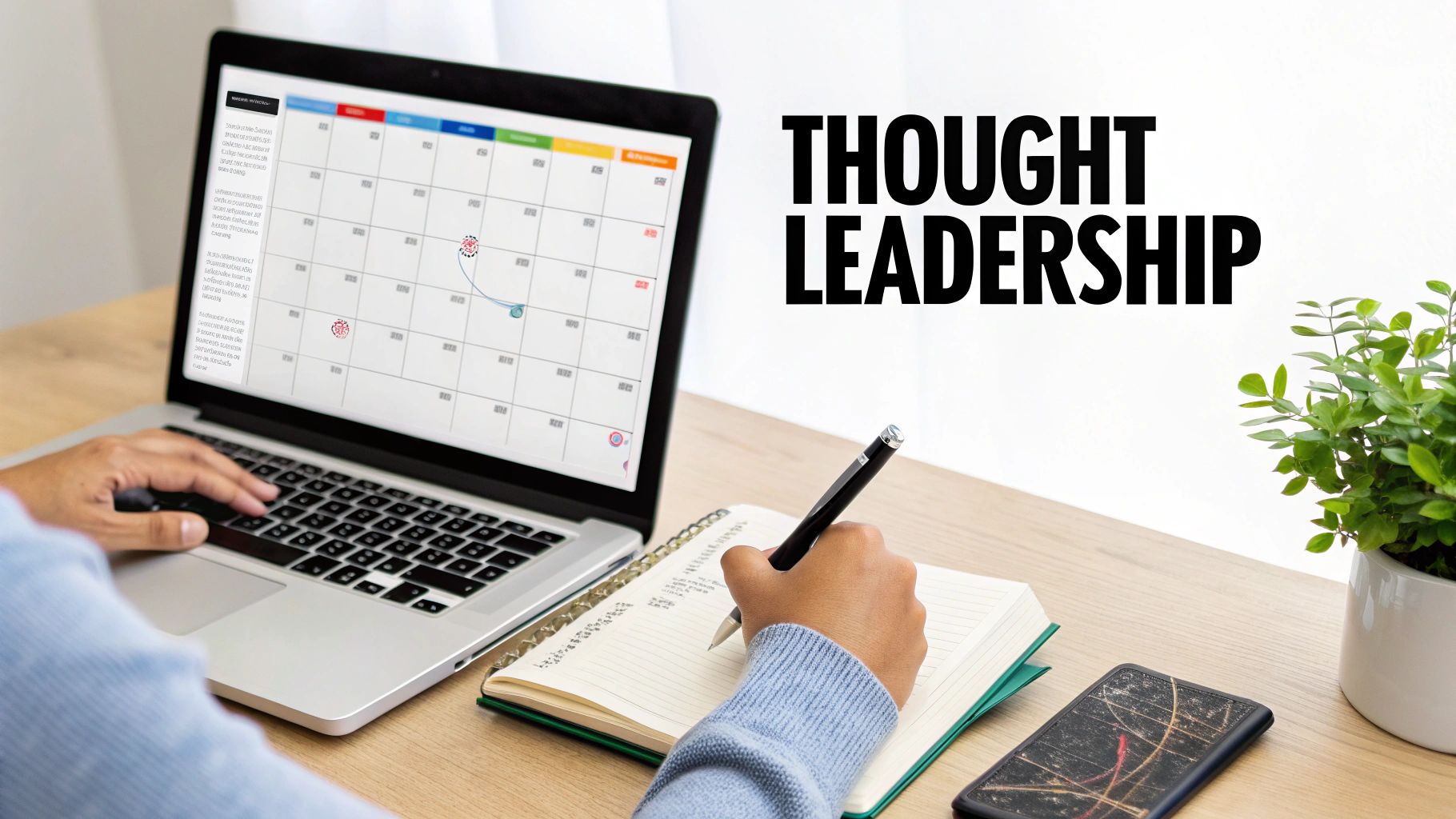
How to Implement a Content Marketing Strategy
Effective content marketing requires a strategic, not haphazard, approach. For example, a specialized Google Ads consultant can create content targeting the specific frustrations businesses face with overpriced, bloated agencies. By focusing on transparent pricing models, personalized service, and demonstrating superior ROI through case studies, this content directly addresses a key pain point and attracts highly qualified leads who value expertise over agency size.
Actionable Steps:
Identify Pain Points: Use tools like AnswerThePublic or browse forums like Reddit and Quora to find the real questions your target audience is asking.
Create Topic Clusters: Build your authority by developing a main "pillar" page on a broad topic (e.g., "Google Ads for E-commerce") and linking out to more specific "cluster" articles (e.g., "Optimizing Shopping Ads for Profitability"). This structure is highly effective for SEO.
Optimize and Distribute: Ensure every piece of content is optimized for long-tail keywords with commercial intent. Promote your content across multiple channels, such as LinkedIn, email newsletters, and relevant online communities, to maximize its reach.
Include Clear CTAs: Guide your audience to the next step with relevant calls-to-action (CTAs), such as downloading an e-book, signing up for a webinar, or booking a consultation.
2. Account-Based Marketing (ABM)
Account-Based Marketing (ABM) is a focused B2B strategy that flips the traditional marketing funnel on its head. Instead of casting a wide net to capture as many leads as possible, ABM treats individual high-value accounts as markets of one, concentrating marketing and sales resources on a select group of target companies with personalized, coordinated campaigns. This laser-focused approach ensures every interaction is highly relevant, building deeper relationships and significantly improving the odds of closing larger deals.
This strategy is one of the most effective demand generation strategies for B2B companies because it eliminates wasted resources on prospects who are a poor fit. By aligning sales and marketing teams from the start, you create a seamless, customized buying experience that resonates with key decision-makers, leading to higher conversion rates, increased customer lifetime value, and a more predictable revenue pipeline.
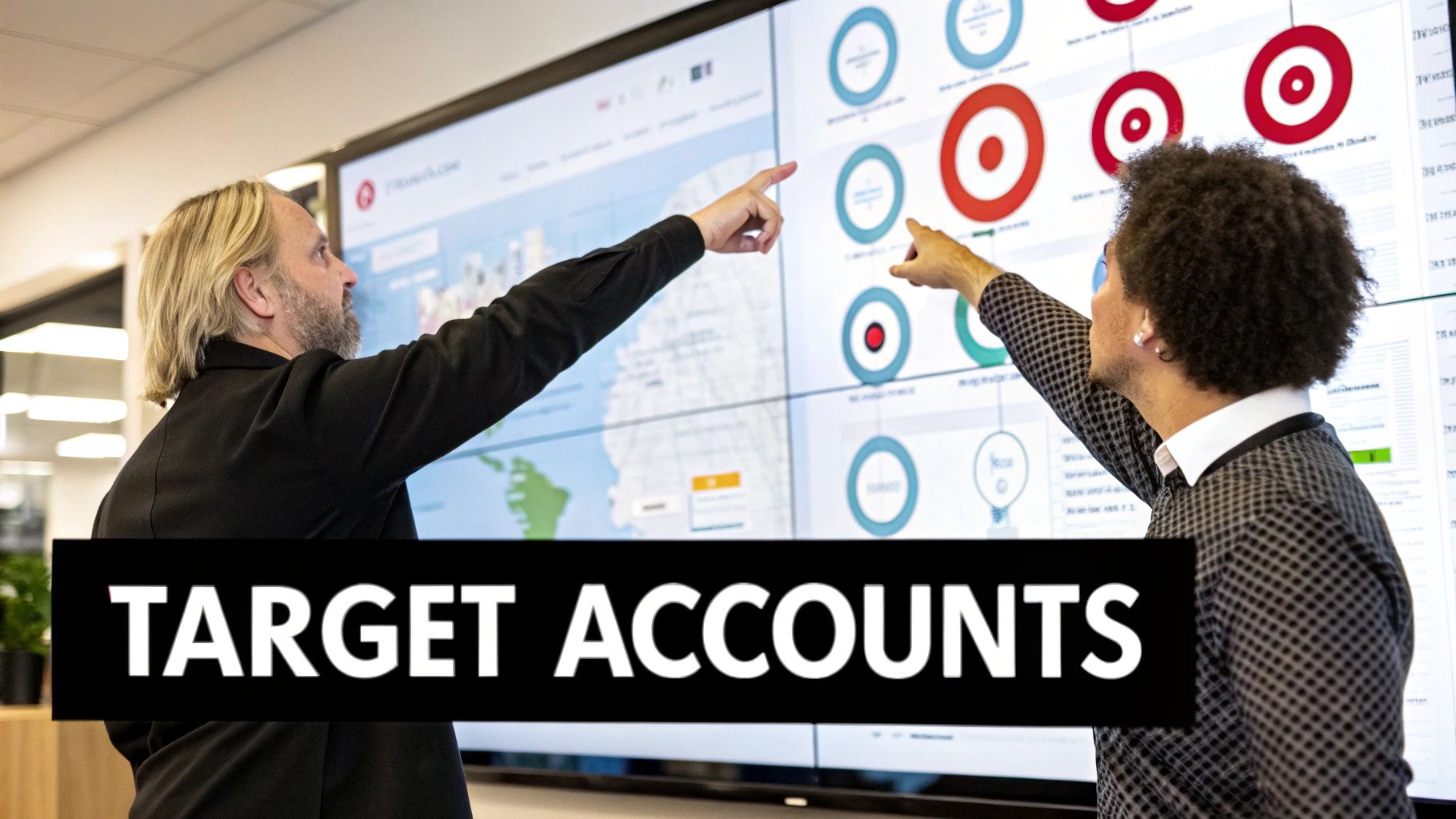
How to Implement an Account-Based Marketing Strategy
A successful ABM strategy requires deep alignment and personalization. For instance, a specialized Google Ads consultant can use ABM to target a handful of high-spend e-commerce brands struggling with bloated agency fees and poor results. Instead of generic ads, the consultant could use LinkedIn Sales Navigator to identify marketing VPs at these companies and run hyper-targeted campaigns showcasing case studies of similar brands whose ROI was doubled, directly addressing their need for specialized expertise over agency scale.
Actionable Steps:
Identify and Prioritize High-Value Accounts: Work with your sales team to create an Ideal Customer Profile (ICP) and select a small, manageable list of 10-20 target accounts that perfectly match it.
Research and Personalize: Dive deep into each target account. Identify key stakeholders, understand their specific business challenges, and map out their organizational structure. Use this intel to craft bespoke messaging.
Coordinate Multi-Channel Outreach: Align marketing and sales efforts to engage contacts across multiple touchpoints. This could involve personalized emails from sales, targeted ads on LinkedIn, and direct mail campaigns with custom-tailored content.
Measure and Optimize: Track account-level engagement metrics, not just individual lead scores. Monitor pipeline velocity, deal size, and win rates for your target accounts to measure success and refine your approach.
3. Webinars and Virtual Events
Webinars and virtual events are powerful, interactive demand generation strategies that allow you to connect directly with your audience in real time. This format excels at demonstrating deep expertise, building trust, and educating prospects on complex topics, positioning your brand as an authoritative resource. By offering high-value educational content, you can attract a qualified audience, address their specific questions, and guide them toward a solution.
This direct engagement model allows you to build a personal relationship with potential clients, moving them from passive interest to active consideration. Instead of just reading a blog post, attendees can interact, ask questions, and see your expertise firsthand, which significantly shortens the sales cycle and generates high-intent leads.
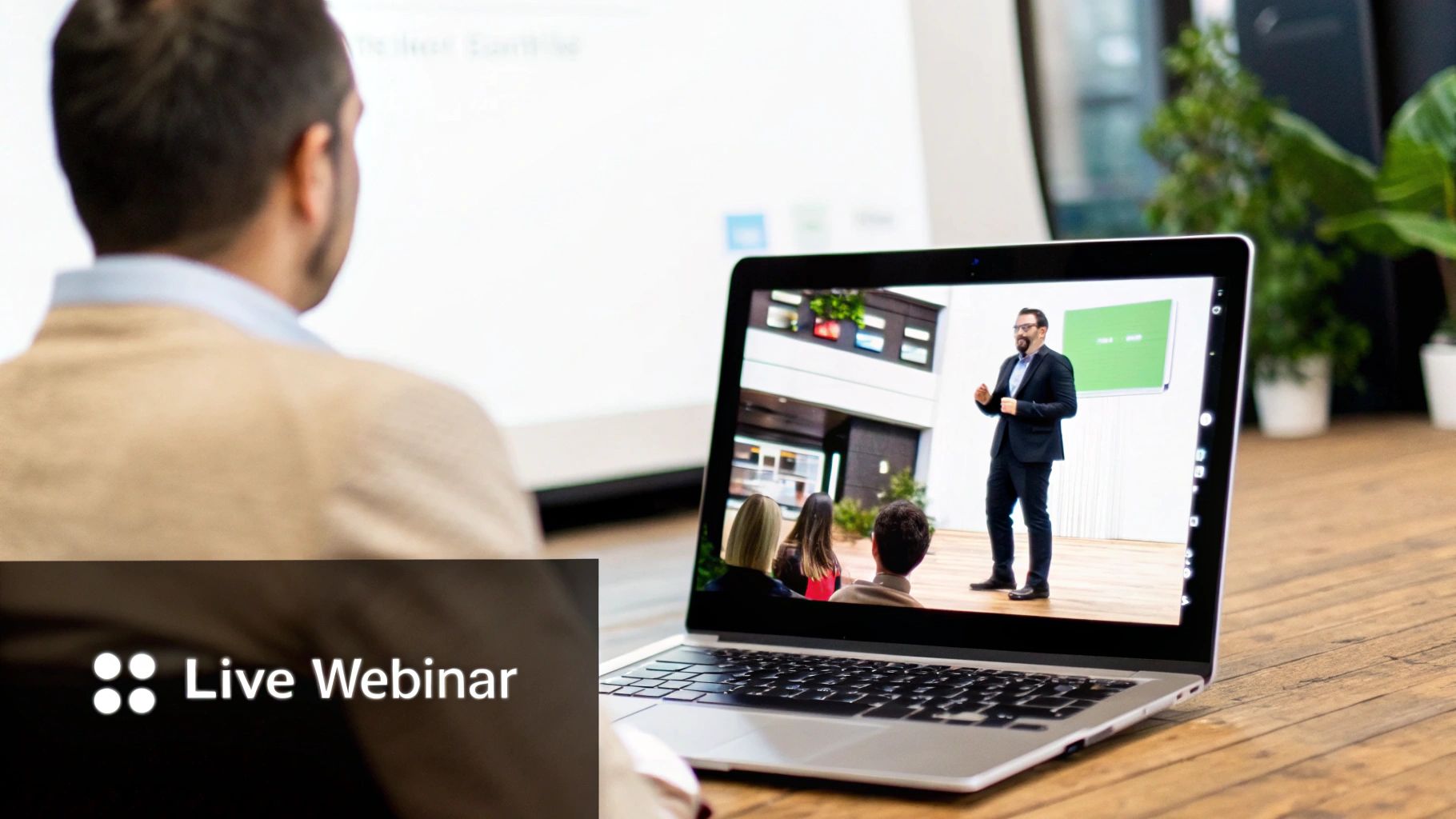
How to Implement a Webinar Strategy
An effective webinar strategy goes beyond a simple presentation; it's a carefully orchestrated event designed to create value and drive action. For example, a specialized Google Ads consultant can host a webinar titled "The 5 Costly Mistakes SMBs Make with Bloated Agencies." This topic directly targets the pain points of businesses frustrated with a lack of results and high fees, offering clear, actionable solutions that showcase the consultant's superior, personalized approach.
Actionable Steps:
Choose a High-Impact Topic: Identify a pressing challenge your target audience faces that you can solve. Use a title that clearly communicates the value proposition and creates urgency.
Promote Extensively: Start promoting your event at least two weeks in advance across all channels, including email, social media, and paid ads. For more insights, explore how to advertise an event effectively at cometogether.media.
Engage Your Audience: Keep presentations concise (45-60 minutes) and use interactive elements like polls, live Q&A sessions, and chat to maintain engagement and gather valuable feedback.
Follow Up Promptly: Send a follow-up email within 24 hours to all registrants, including a link to the recording, a summary of key takeaways, and a clear call-to-action, such as booking a free consultation.
4. Email Marketing and Nurture Sequences
Email marketing remains one of the highest-ROI demand generation strategies. It involves using targeted, personalized email sequences to nurture prospects through the buyer journey, delivering the right message at the right time. Instead of generic email blasts, this strategy focuses on automated nurture campaigns that deliver relevant content based on user behavior and stage, keeping your brand top-of-mind.
This approach allows you to build a direct line of communication with potential customers who have already shown interest in your brand. By systematically providing value through educational content, special offers, and personalized follow-ups, you guide prospects from initial awareness to a confident purchase decision, establishing a foundation of trust and authority.
How to Implement an Email Nurturing Strategy
An effective email nurturing strategy is hyper-personalized, not a one-size-fits-all broadcast. For instance, a specialized Google Ads consultant can create a nurture sequence triggered when a user downloads a guide titled "5 Signs Your Google Ads Agency is Wasting Your Budget." The sequence would include emails that detail the benefits of a lean, expert-led approach, case studies showing massive ROI improvements after leaving a bloated agency, and a final CTA to book a free, transparent audit.
Actionable Steps:
Segment Your Audience: Use platforms like Klaviyo or HubSpot to segment your email list based on behavior (e.g., visited pricing page), demographics, or how they joined your list. This ensures maximum relevance.
Develop Stage-Specific Content: Create a 5-7 email nurture sequence for each key segment. An early-stage sequence might offer educational content, while a late-stage sequence could feature case studies and a direct consultation offer.
Personalize Beyond the First Name: Use dynamic content to reference the specific services or content a lead engaged with. This demonstrates that you understand their unique needs and challenges.
Optimize and Clean Your Lists: Continuously test subject lines and CTAs to improve open and click-through rates. Regularly remove inactive subscribers to maintain high deliverability and protect your sender reputation.
5. Social Media Marketing and LinkedIn Outreach
Social media marketing, especially on professional networks like LinkedIn, has evolved from a simple brand awareness tool into a powerful engine for demand generation. This strategy involves building a strong brand presence, distributing valuable content, and engaging directly with potential customers to create meaningful conversations. For B2B, LinkedIn in particular offers an unparalleled environment to connect with decision-makers, establish authority, and guide prospects through the buyer's journey.
Instead of just broadcasting promotional messages, this approach focuses on social selling, where you build relationships and provide value before asking for anything. By consistently sharing insights, commenting on industry trends, and interacting with your audience's content, you position your brand as a helpful resource. This trust-building process makes prospects more receptive to your solutions when they are ready to engage.
How to Implement a Social Media and LinkedIn Strategy
Effective social media demand generation is about precision and personalization, not just volume. For example, a specialized Google Ads consultant can use LinkedIn to bypass the noise of large agencies. Instead of generic posts, they can share highly specific case studies on reducing cost-per-acquisition for niche healthcare practices or create video content breaking down a complex Performance Max campaign, demonstrating expertise that larger, less specialized firms cannot match.
Actionable Steps:
Optimize Your Profile: Treat your LinkedIn profile as a landing page. Use a professional headshot, a benefit-driven headline, and a summary that speaks directly to your ideal client's pain points.
Post Valuable Content Consistently: Share insights, industry news, and practical tips 3-5 times per week. Use native content like text posts, carousels, and videos, as platforms often favor them over external links.
Engage Before You Outreach: Interact with your prospects' posts by leaving thoughtful comments for a week or two before sending a connection request. This warms up the "cold" outreach and increases acceptance rates.
Personalize Your Messages: Avoid generic templates. Reference a specific post, mutual connection, or recent company achievement in your connection requests and follow-up messages to show you’ve done your research. For a deep dive into leveraging LinkedIn for your efforts, explore these effective top LinkedIn lead generation strategies for 2025.
6. Search Engine Marketing (SEM) and PPC Advertising
Search Engine Marketing (SEM) is a powerful demand generation strategy that captures high-intent prospects at the exact moment they are searching for a solution. It combines organic SEO efforts with paid advertising, most notably Pay-Per-Click (PPC), to place your brand at the top of search engine results pages (SERPs). While SEO builds long-term authority, PPC advertising generates immediate, qualified traffic from users actively looking to solve a problem or make a purchase.
This approach is highly effective because it meets customers where their intent is highest. Unlike strategies that interrupt a user's activity, SEM provides a direct answer to a stated need. By bidding on keywords relevant to your offerings, you ensure your solution appears front and center, creating a direct path from search query to conversion for people ready to act now.
How to Implement a SEM and PPC Strategy
An effective SEM strategy goes beyond just bidding on keywords; it requires meticulous targeting and optimization. For instance, an expert Google Ads consultant can outperform a bloated agency by focusing on hyper-relevant ad groups and landing pages. Instead of a one-size-fits-all approach, a specialist will target competitor keywords, such as "Salesforce alternative," and direct that traffic to a dedicated landing page comparing features and pricing, capturing leads who are already dissatisfied and looking to switch.
Actionable Steps:
Target High-Intent Keywords: Start with long-tail keywords that signal commercial intent, such as "[product name] for small businesses" or "[service] pricing."
Create Dedicated Landing Pages: Never send PPC traffic to your homepage. Build specific landing pages for each ad group that match the ad copy's promise and provide a clear, single call-to-action.
Implement Rigorous Tracking: Use conversion tracking and UTM parameters to measure ROI accurately. Knowing which keywords and ads drive actual business results is critical.
Use Negative Keywords: Actively build a negative keyword list to prevent your ads from showing for irrelevant searches. This simple step is crucial for eliminating wasted ad spend and improving lead quality. Learn more about the top search engine marketing strategies to boost your ROI.
7. Partnerships and Co-Marketing
Strategic partnerships and co-marketing are powerful demand generation strategies that amplify reach by combining the audiences and resources of two or more complementary companies. Instead of building an audience from scratch, you tap into a pre-existing, relevant market, generating mutual demand. This approach allows you to access new customer segments, share marketing costs, and gain instant credibility by associating your brand with another trusted name.
By joining forces, you create a value proposition that is often greater than what either company could offer alone. This synergy builds momentum and delivers highly qualified leads, as the endorsement from a trusted partner acts as a powerful referral, warming up potential customers before they even interact with your brand directly.
How to Implement a Partnership and Co-Marketing Strategy
Effective partnerships are built on mutual benefit and clear communication. For instance, a specialized Google Ads consultant could partner with a web design agency. The agency builds high-performing websites but doesn't handle traffic generation, while the consultant drives targeted traffic but doesn't build sites. By referring clients to each other and co-hosting a webinar on "The Anatomy of a High-Converting Sales Funnel," both parties provide immense value to their respective audiences and generate warm, high-intent leads for each other.
Actionable Steps:
Identify Complementary Partners: Look for businesses that serve the same target audience but are not direct competitors. Tools like LinkedIn can help you find potential partners in adjacent industries.
Define Mutual Goals: Clearly outline what each partner hopes to achieve, whether it's lead generation, brand awareness, or market expansion. Establish shared KPIs to measure success from the start.
Create a Joint Value Proposition: Develop a co-branded offer, such as a joint webinar, a bundled service package, or a co-authored e-book. Ensure the offer is compelling and provides unique value to both audiences.
Formalize the Agreement: Create a simple partnership agreement that outlines responsibilities, promotional commitments, lead-sharing processes, and timelines to ensure both parties are aligned and accountable.
8. Influencer and Thought Leader Marketing
Influencer and thought leader marketing leverages the credibility and reach of established industry experts to build trust and generate demand. Instead of broadcasting your message to a cold audience, you partner with respected voices whose followers already trust their recommendations, creating a powerful form of social proof that traditional advertising cannot replicate. This is one of the most effective demand generation strategies for cutting through market noise.
This approach allows you to tap into a pre-built, engaged community that aligns with your ideal customer profile. When a recognized authority in your niche advocates for your solution, it acts as a powerful endorsement, transferring their credibility directly to your brand and accelerating the buyer's journey from awareness to consideration.
How to Implement Influencer and Thought Leader Marketing
Effective influencer marketing requires genuine relationships, not just transactional exchanges. For example, a specialized Google Ads consultant can collaborate with a respected B2B marketing podcaster. By offering exclusive insights on a podcast episode about avoiding bloated agency fees, the consultant provides immense value to the audience, and the podcaster gets high-quality content. This creates an authentic endorsement that drives qualified leads.
Actionable Steps:
Identify Aligned Voices: Look for micro-influencers and thought leaders whose audience and values perfectly match your own. Prioritize high engagement rates over massive follower counts, as a smaller, dedicated following often yields better results.
Build Authentic Relationships: Engage with their content, share their work, and offer value long before you ask for anything. A genuine connection is the foundation of a successful partnership.
Co-Create Valuable Content: Partner on webinars, joint research reports, podcast interviews, or LinkedIn Live sessions. This positions both you and the influencer as authorities while providing tangible value to the audience.
Track Beyond Direct Sales: Measure success not just in conversions but also in brand mentions, website referral traffic, and social sentiment. The primary goal is to build long-term brand equity and demand.
9. Landing Page Optimization and Conversion Rate Optimization (CRO)
Driving traffic is only half the battle; converting that traffic into tangible leads or sales is where value is truly created. This is the domain of Landing Page Optimization and Conversion Rate Optimization (CRO), a critical component of effective demand generation strategies. CRO is the systematic process of increasing the percentage of website visitors who take a desired action, turning your existing traffic into a more powerful asset.
Instead of spending more to attract new visitors, CRO focuses on getting more value from the ones you already have. By testing and refining elements like headlines, calls-to-action (CTAs), and page layout, you can significantly boost your return on ad spend (ROAS) and lower your customer acquisition cost, maximizing the efficiency of every dollar invested in your campaigns.
How to Implement a CRO Strategy
An effective CRO strategy is data-driven and methodical. For a specialized Google Ads consultant, this means ensuring the ad's promise is perfectly fulfilled by the landing page experience. While bloated agencies often use generic, one-size-fits-all landing pages, a dedicated expert creates highly specific, message-matched pages that speak directly to the user's search intent. This alignment dramatically improves Quality Score, reduces cost-per-click, and, most importantly, increases conversions.
Actionable Steps:
Establish a Baseline: Use analytics to identify high-traffic, low-conversion pages. These are your best starting points for optimization.
Test One Element at a Time: To get clear, reliable data, A/B test a single variable, such as the headline, CTA button color, or form length. Tools like Optimizely or Unbounce are excellent for this.
Reduce Friction: Simplify forms by asking for only essential information (3-5 fields max). Every additional field is a potential drop-off point.
Align Ad and Page Messaging: Ensure your landing page headline and copy directly reflect the ad that brought the visitor there. This creates a seamless and trustworthy user experience. For more in-depth techniques, explore these conversion rate optimization best practices.
10. Customer Referral and Advocacy Programs
Customer referral and advocacy programs transform your most satisfied customers into a powerful demand generation engine. This strategy incentivizes existing clients to refer new prospects and serve as brand advocates, generating highly qualified leads through trusted, word-of-mouth recommendations. Instead of relying solely on cold outreach, you leverage the credibility of your happy customers, significantly reducing acquisition costs and shortening sales cycles.
This approach is one of the most effective demand generation strategies because it taps into the power of social proof. A recommendation from a trusted peer is far more persuasive than any advertisement. By formalizing this process, you create a scalable, predictable stream of warm leads who already have a positive impression of your brand, making them easier to convert.
How to Implement a Customer Referral Program
A successful referral program must be simple, rewarding, and easy to track. For instance, an independent Google Ads consultant can create a program where existing clients receive a significant credit on their next invoice for every new client they refer who signs a contract. This directly rewards their loyalty and leverages their success story to attract other businesses frustrated with the poor results and high fees of bloated agencies.
Actionable Steps:
Offer Compelling Incentives: Provide a reward that is genuinely valuable to your customers, such as cash bonuses, service credits, or exclusive upgrades.
Make Referring Effortless: The process should be incredibly simple. Implement one-click sharing links, pre-written email templates, and unique referral codes that customers can easily distribute.
Promote the Program Consistently: Don't let your program be a secret. Promote it in your email signatures, newsletters, client reports, and during check-in calls.
Track Everything: Use referral marketing software or unique tracking links to monitor where referrals come from. Publicly recognize and reward your top advocates to encourage more participation and showcase the program's value.
10 Demand Generation Strategies Comparison
Strategy | 🔄 Implementation complexity | ⚡ Resources & speed | 📊 Expected outcomes | 💡 Ideal use cases | ⭐ Key advantages |
|---|---|---|---|---|---|
Content Marketing | Medium — editorial processes & consistency required | Moderate resources (writers/designers); slow ROI (6–12 months) | Sustained organic traffic, authority, inbound leads | Thought leadership, long sales cycles, top-of-funnel education | ⭐⭐⭐⭐ Lower cost/lead over time; scalable organic growth |
Account-Based Marketing (ABM) | High — cross-team coordination, account customization | High resource & data needs; moderate speed after setup | Higher ROI, larger deal sizes, shorter cycles for target accounts | Enterprise B2B, high-value accounts, expansion/renewals | ⭐⭐⭐⭐⭐ High ROI and deal value; tight sales–marketing alignment |
Webinars & Virtual Events | Medium — event production and promotion workflow | Moderate resources; fast lead capture around events but prep-heavy | Qualified leads, attendee engagement, reusable content | Product demos, thought leadership, lead generation campaigns | ⭐⭐⭐⭐ Strong engagement and lead volume; repurposable content |
Email Marketing & Nurture Sequences | Low–Medium — automation and segmentation setup | Low resources; very fast and highly scalable | High ROI, steady nurture-to-conversion pipeline | Lead nurturing, onboarding, cross-sell/upsell sequences | ⭐⭐⭐⭐⭐ Highest ROI; precise targeting & measurable performance |
Social Media & LinkedIn Outreach | Medium — content cadence and outreach discipline | Low–Moderate resources; organic is slower, paid is faster | Awareness, direct engagement, social selling pipeline | Brand building, prospect outreach, community engagement | ⭐⭐⭐ Cost-effective organic reach; direct access to decision makers |
Search Engine Marketing (SEM) & PPC | Medium — campaign setup, bidding & landing optimization | Moderate–High resources; immediate traffic and measurable results | Immediate, high-intent leads; highly attributable ROI | Demand capture, product launches, competitive keyword capture | ⭐⭐⭐⭐ Quick, measurable, scalable (budget-driven) |
Partnerships & Co‑Marketing | Medium–High — alignment, contracts, shared planning | Moderate resources; moderate speed depending on partner readiness | Access to new audiences, shared costs, credibility boost | Market expansion, complementary product audiences, joint events | ⭐⭐⭐ Access to qualified audiences with shared investment |
Influencer & Thought Leader Marketing | Medium — identification, vetting, relationship building | Variable resources (micro to mega); moderate speed dependent on partner | Increased awareness, credibility, authentic endorsements | Niche audience reach, awareness campaigns, credibility building | ⭐⭐⭐ Authentic advocacy; leverages trusted third-party voice |
Landing Page Optimization & CRO | Medium — testing framework and analytics required | Moderate resources (dev + analytics); incremental but often quick gains | Higher conversion rates, improved ROI on existing traffic | High-traffic pages, paid campaign optimization, lead-gen funnels | ⭐⭐⭐⭐ Cost-effective conversion uplift; data-driven improvements |
Customer Referral & Advocacy Programs | Low–Medium — program design and tracking needed | Low ongoing resources once established; moderate scaling speed | Highest-quality leads, low CAC, strong conversion & retention | SaaS and products with satisfied users, loyalty-driven growth | ⭐⭐⭐⭐⭐ Best lead quality and lowest acquisition cost |
Choosing the Right Partner for Your Demand Generation
We have explored a comprehensive suite of powerful demand generation strategies, from the foundational authority-building of content marketing to the targeted precision of Account-Based Marketing (ABM) and the high-impact engagement of Search Engine Marketing (SEM). Each tactic, whether it's a meticulously crafted email nurture sequence or a dynamic virtual event, represents a vital lever you can pull to create awareness, capture interest, and ultimately drive revenue. The key takeaway is that demand generation is not a single action but a multi-faceted engine.
The challenge, however, is not just knowing what these strategies are; it's executing them with the precision and expertise required to generate a positive return on investment. This is especially true for highly technical channels like Google Ads, where small mistakes can lead to significant budget waste. The path to success hinges on moving from theory to implementation, which requires a partner who can navigate the complexities and deliver tangible results.
The Agency Dilemma vs. The Specialist Advantage
When seeking help to execute these complex demand generation strategies, many businesses default to hiring a large, full-service marketing agency. On the surface, this seems logical. They offer a broad range of services and have a large team. However, this model often comes with significant drawbacks you cannot afford to ignore.
Key Insight: With large agencies, you often pay a premium for their overhead, layered management, and sales teams. The person actually managing your critical Google Ads account is frequently a junior-level employee juggling dozens of clients, leading to a diluted, templated approach that overlooks the unique nuances of your business.
This is where a different model proves its value: partnering with a dedicated, expert consultant. Instead of being a small client lost in a massive agency portfolio, you get direct, one-on-one access to a seasoned specialist. This approach strips away the bloat and inefficiency, focusing every dollar and every minute on what truly matters: driving qualified demand for your business.
A specialized consultant offers several distinct advantages:
Direct Access to Expertise: You work directly with the expert. There are no communication layers or account managers acting as intermediaries. Your strategy is built and executed by someone with deep, hands-on experience, ensuring a higher level of insight and faster, more agile decision-making.
Tailored, Not Templated: An independent expert has the flexibility to create a truly bespoke strategy. They are not bound by rigid agency processes or incentivized to upsell you on services you don't need. The focus remains squarely on your specific business goals and KPIs.
Cost-Effectiveness and Transparency: Without the heavy overhead of a large agency, a specialist consultant can provide senior-level expertise at a more accessible price point. You invest in skill and results, not in fancy office space or a bloated C-suite. Reporting is direct and transparent, focused on the metrics that impact your bottom line.
Mastering demand generation strategies is the key to predictable, scalable growth. But the how is just as important as the what. Choosing the right partner to implement these strategies, particularly in a competitive arena like PPC, is the most critical decision you will make. It's the difference between a campaign that simply spends money and a strategic investment that builds a powerful, sustainable pipeline of future customers.
If you're ready to stop being just another account number at a big agency and want to see what a focused, expert-led approach can do for your Google Ads performance, let's connect. Come Together Media LLC specializes in crafting and managing high-performance PPC campaigns that are central to effective demand generation. Visit Come Together Media LLC to see how 15+ years of specialized expertise can directly fuel your business growth.




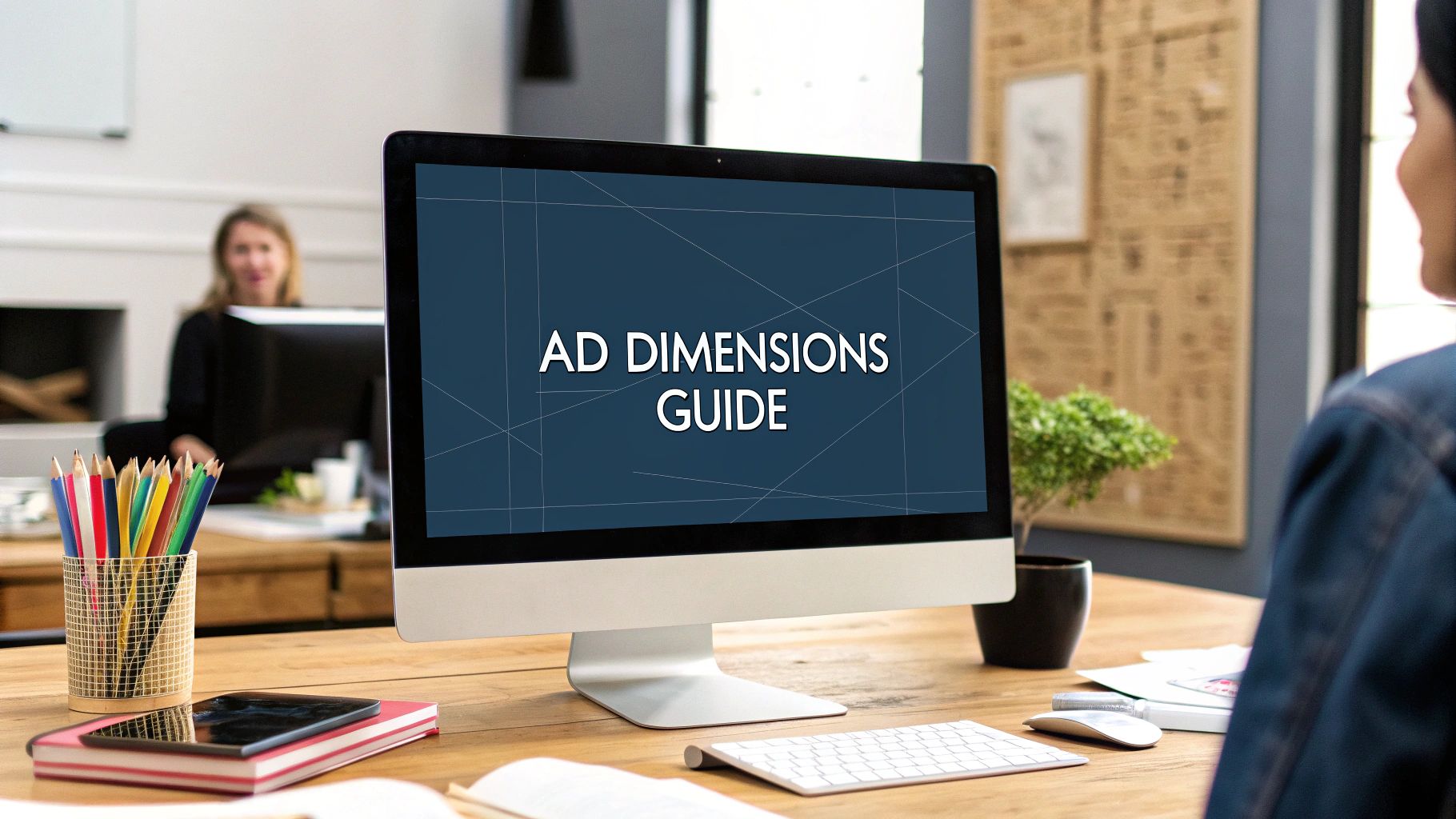

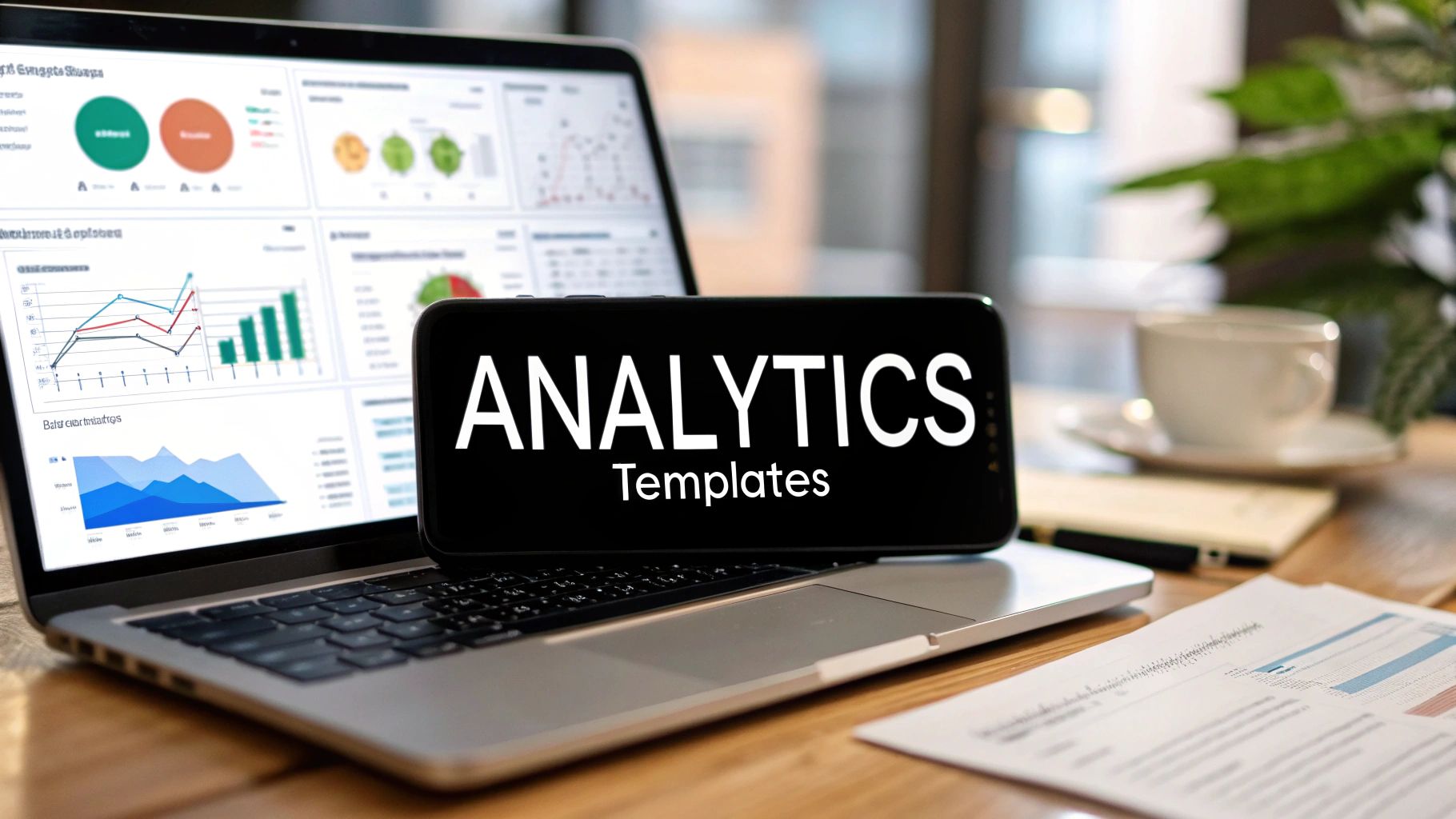
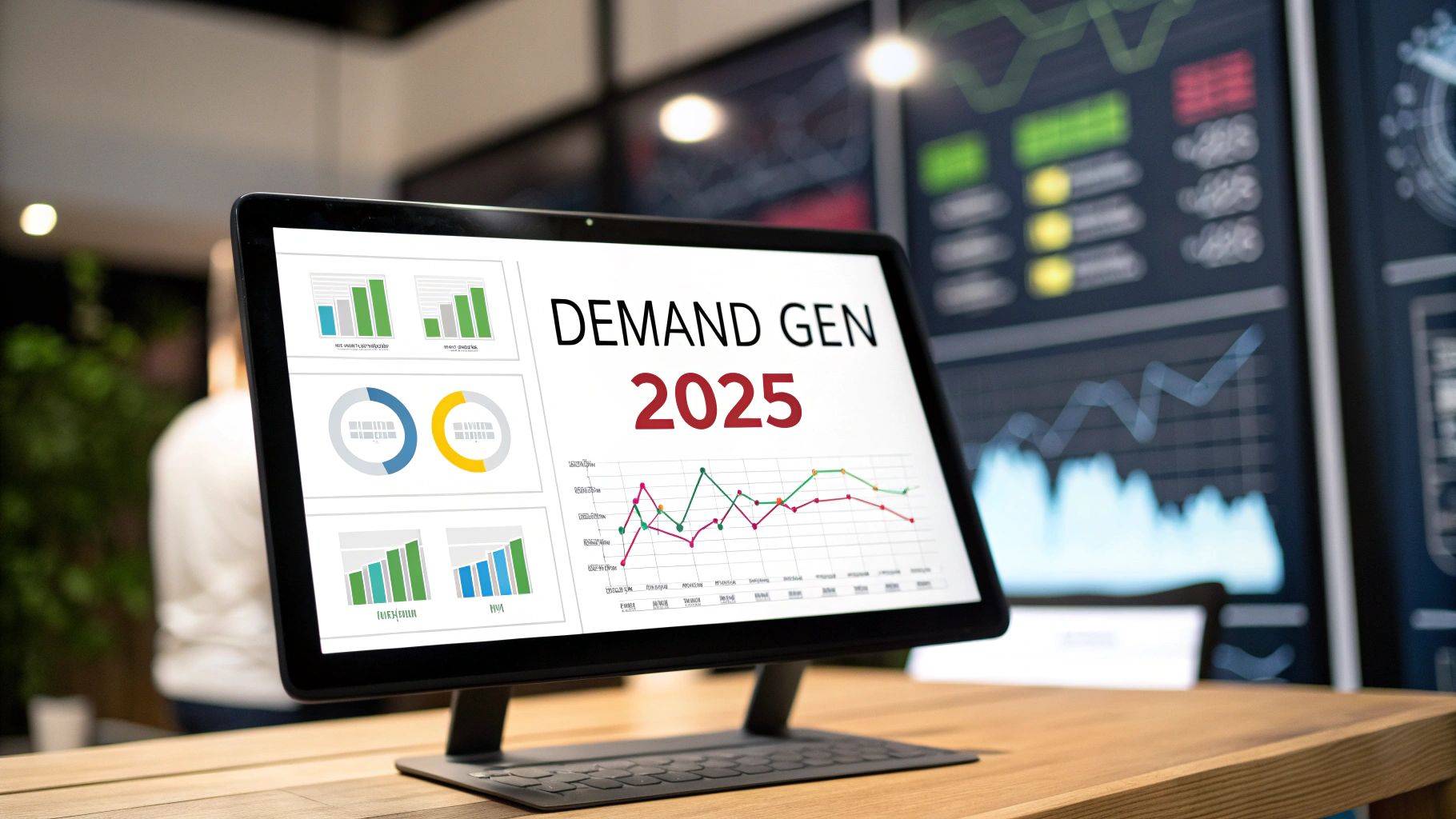

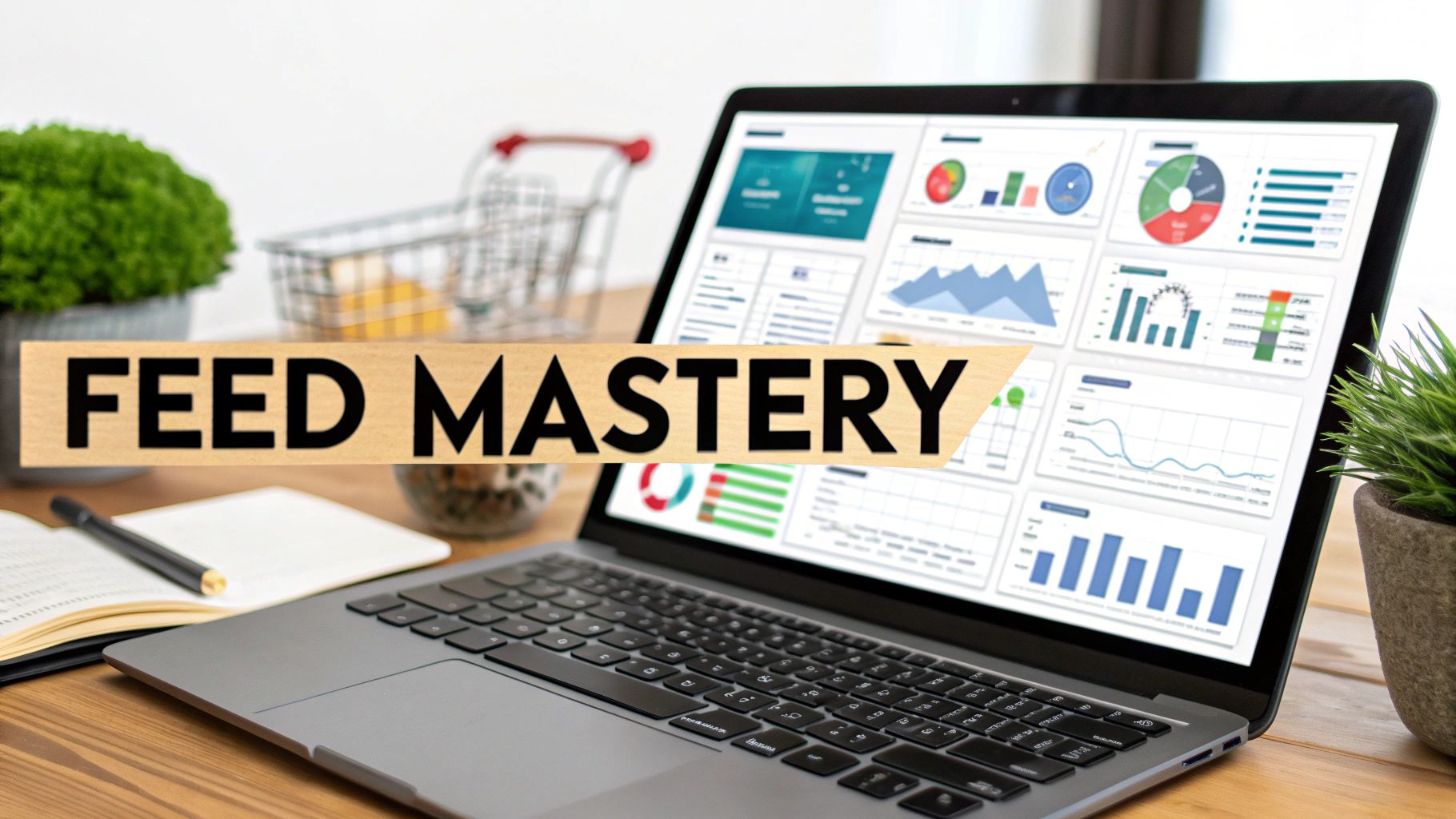


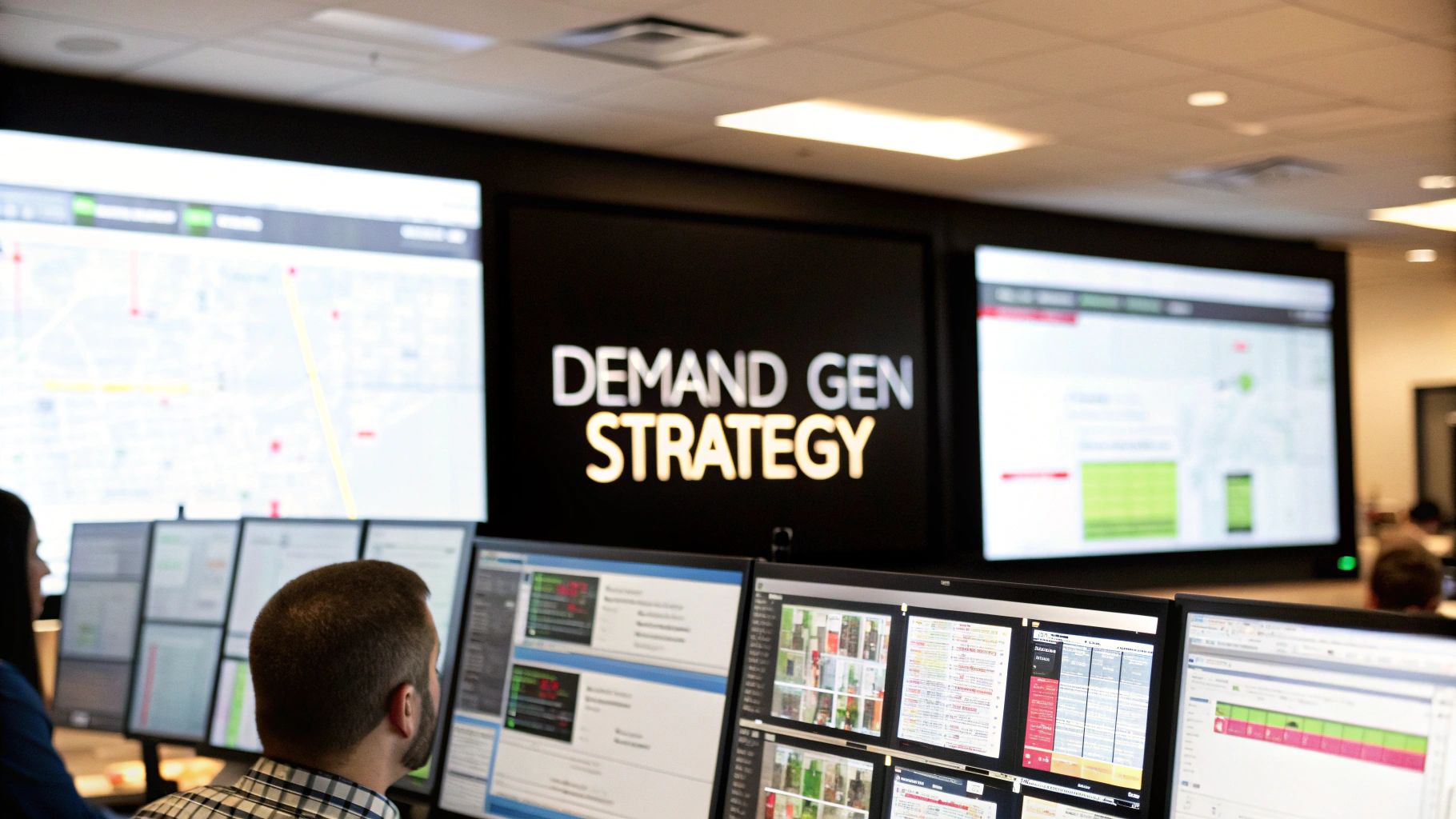

Comments